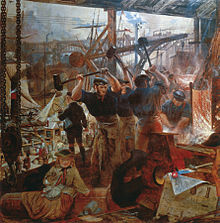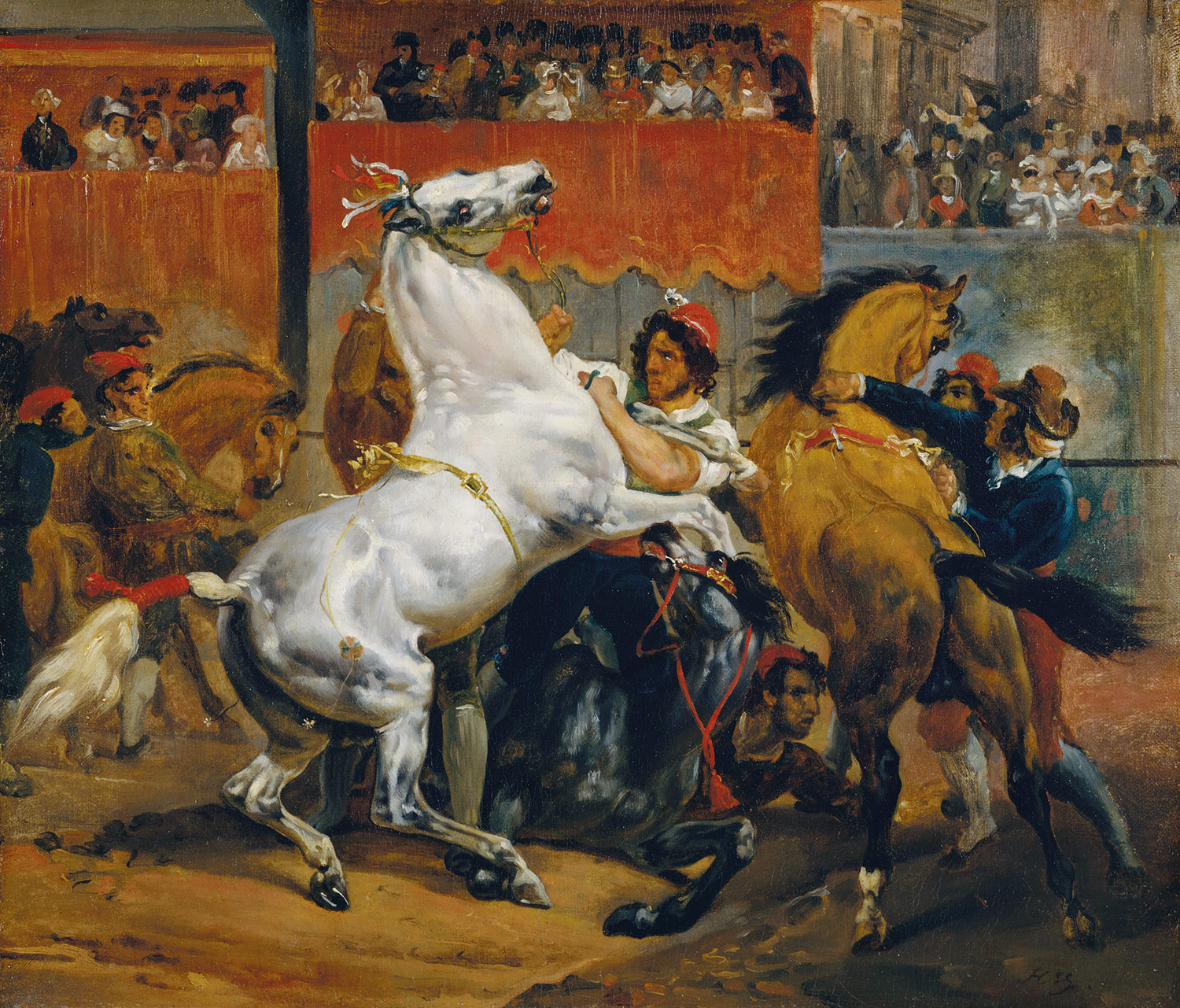TASK - Research the reaction of 'Romanticist' visual artists to the industrial revolution in the 19th century
Romanticism was a European art movement developed towards the end of the 18th century and was used as a means to revolt against the new 'Industrial' revolution and the 'Age of Enlightenment'.
The industrial revolution was the beginning of a new age of high tech machinery and new inventions such as the discovery of steam powered and coal fueled machinery and train travel. This was a major historical turning point, some even considering this the beginning of a 'capitalist' world wide economy.

'Iron and coal' by William Bell Scott, 1860
'Industrialist' dismissed arts, music and literature, believing them to be unimportant compared to the new scientific discoveries being made at the time and valued science over the arts.
All who were opposed to Industrialism became 'Romanticists', who were liberal preservers of classic art, music and literature. It was a movement that rejected rationality and embraced strangeness, imagination and emotions.
Romanticists became the new radicals of the 19th century and Romanticist artists incorporated classic artistic ideals and medieval and chinosserie styles into their paintings.
Artists would usually depict scenes from classic literature or stories in their paintings.

'The lady of Shallot' by John William Waterhouse, 1888

'The start of the race of the riderless horses' by Horace Vernet, 1820
The industrial revolution was the beginning of a new age of high tech machinery and new inventions such as the discovery of steam powered and coal fueled machinery and train travel. This was a major historical turning point, some even considering this the beginning of a 'capitalist' world wide economy.

'Iron and coal' by William Bell Scott, 1860
'Industrialist' dismissed arts, music and literature, believing them to be unimportant compared to the new scientific discoveries being made at the time and valued science over the arts.
All who were opposed to Industrialism became 'Romanticists', who were liberal preservers of classic art, music and literature. It was a movement that rejected rationality and embraced strangeness, imagination and emotions.
Romanticists became the new radicals of the 19th century and Romanticist artists incorporated classic artistic ideals and medieval and chinosserie styles into their paintings.
Artists would usually depict scenes from classic literature or stories in their paintings.

'The lady of Shallot' by John William Waterhouse, 1888

'The start of the race of the riderless horses' by Horace Vernet, 1820
Bibliography -
http://www.britannica.com/EBchecked/topic/508675/Romanticism
http://www.studyblue.com/notes/note/n/neo-classical-romanticism--realism-misc/deck/6460654
http://www.metmuseum.org/toah/hd/roma/hd_roma.htm
http://www.historyguide.org/intellect/lecture16a.html
No comments:
Post a Comment